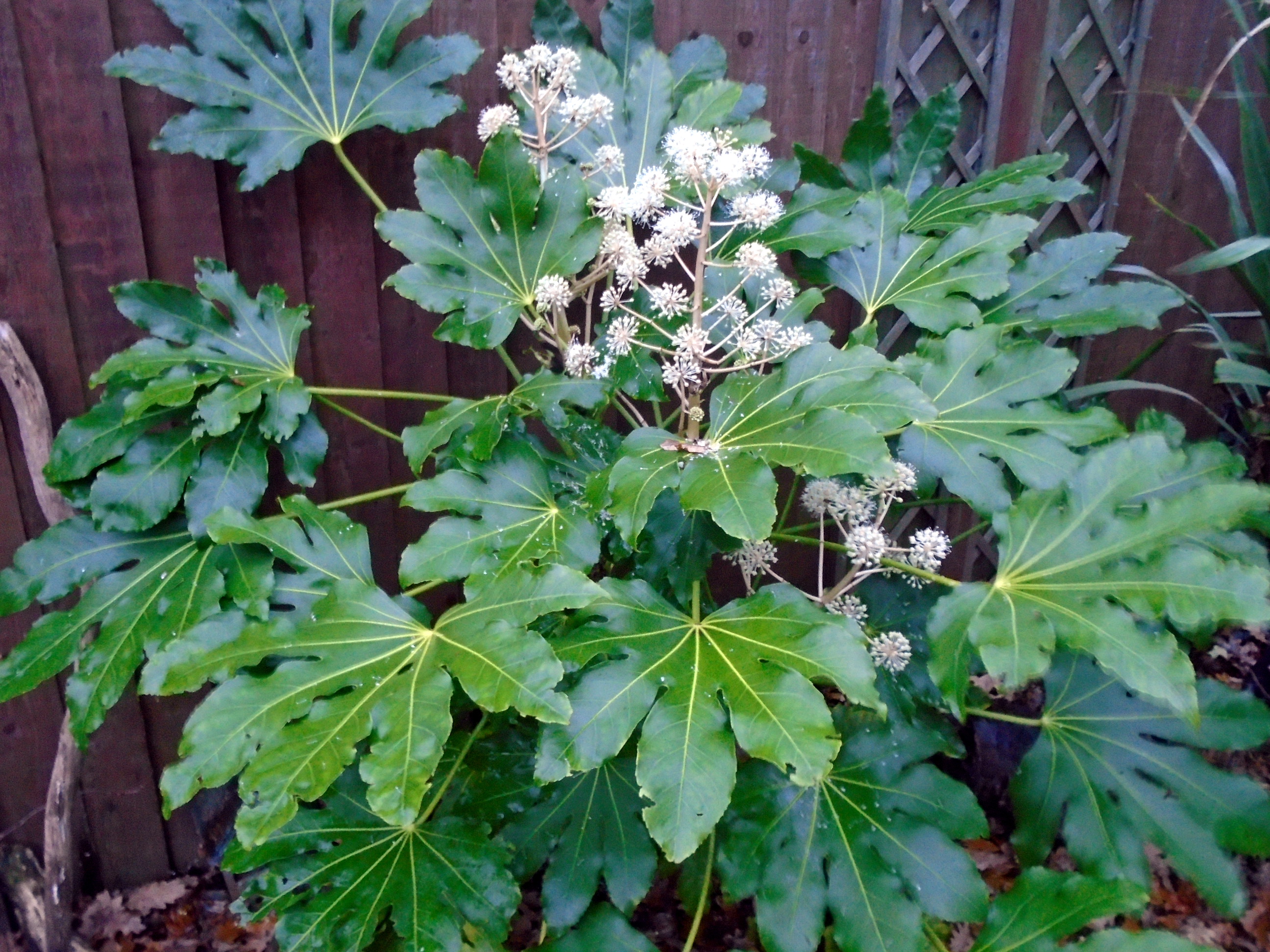Fatsia Japonica: A Versatile Houseplant
Fatsia japonica, commonly known as the Japanese aralia or a false castor oil plant, is a popular houseplant prized for its large, glossy leaves and striking appearance. Native to southern Japan and South Korea, this evergreen shrub thrives in warm, humid environments and can be easily grown indoors with proper care.
Characteristics of Fatsia Japonica

Leaves: Fatsia japonica boasts large, palmate leaves with seven to nine lobes, resembling those of a castor oil plant. The leaves are typically a deep green color but can vary from light green to almost black depending on the cultivar. They are thick, leathery, and have a glossy finish.
Caring for Fatsia Japonica
Light: Fatsia japonica prefers bright, indirect light. Avoid placing it in direct sunlight, as this can scorch the leaves. A north-facing window is often a good location for this plant.

Common Problems and Solutions
Yellowing Leaves: Yellowing leaves can be a sign of overwatering or underwatering. Check the soil moisture and adjust your watering schedule accordingly.
Conclusion

Fatsia japonica is a beautiful and versatile houseplant that adds a touch of elegance to any room. With proper care, this plant can thrive indoors for many years. Its large, glossy leaves and unique appearance make it a popular choice among plant enthusiasts.
FAQs
1. Can Fatsia japonica be grown outdoors? Yes, Fatsia japonica can be grown outdoors in frost-free climates. However, it is best suited for indoor cultivation in most regions.
2. How often should I repot my Fatsia japonica? Repot your Fatsia japonica every two to three years in the spring or summer. Use a well-draining potting mix.
3. Can Fatsia japonica tolerate low light conditions? While Fatsia japonica prefers bright, indirect light, it can tolerate low light conditions. However, the growth rate may be slower and the leaves may become less vibrant.
4. Is Fatsia japonica toxic to pets? No, Fatsia japonica is not toxic to cats or dogs.
5. Can I propagate Fatsia japonica from cuttings? Yes, Fatsia japonica can be propagated from stem cuttings. Take cuttings in the spring or summer and root them in water or a well-draining potting mix.